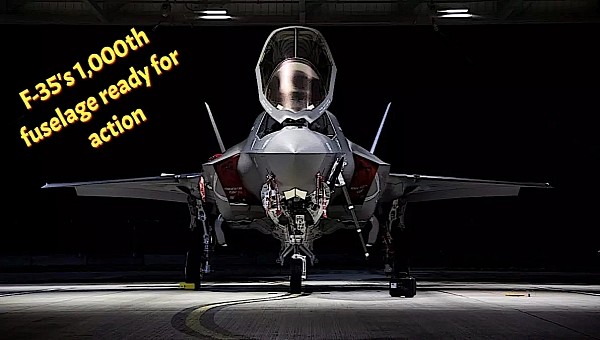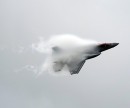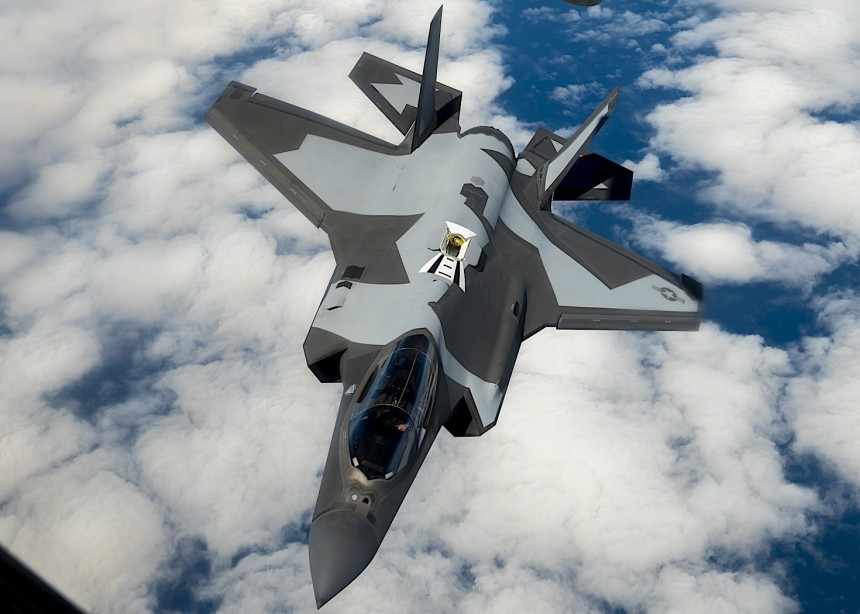The F-35 Lightning II is one of the few fifth generation fighter aircraft currently in operation, and it’s officially listed as being a product of Lockheed Martin. As it’s always the case with such complicated pieces of machinery, the number of companies involved in its production is much, much greater.
The full list of contractors and subcontractors taking part in the F-35 program is not entirely known, but we do know the two prime Lockheed Martin partners in this production effort: Northrop Grumman and BAE Systems.
Northrop Grumman is tasked with making the airplane’s center fuselage (the part of the plane which houses most of the plane’s internal weapons bay and fuel), a series of high-tech pieces of hardware, including the fire control radar, communications, and avionics, but also some software, including for mission systems.
BAE Systems on the other hand makes the rear fuselage for the plane, and a series of other components meant to give the plane computing power and pilot controls.
As one of the most modern aircraft ever made, the F-35 is scheduled to remain in service at least until the 2070s, and that means a lot of milestones will be reached until that time comes.
The most recent such achievement in the production of the F-35, the “world’s largest defense program,” as some call it, has to do with BAE Systems. The British company said this week its production lines rolled off the 1,000th rear fuselage for the F-35, 18 years after the first one was made, and it got delivered to Lockheed Martin for integration into an actual plane.
Although the undisputed king of the sky remains the F-16, at least as far as the number of units made is concerned, with some 4,600 of them produced, the F-35 seems to be rapidly catching up to it.
Available in three main variants for the U.S. military branches, (F-35A, F-35B, and F-35C for the Air Force, Marine Corps, and Navy, respectively), the airplane is also operated by several allied nations.
To date, under 1,000 of them have become operational, but according to BAE Systems, the global program of record has more than 3,000 units listed as needed. Of that, the USAF alone needs a total of 1,700 F-35A variants.
In this configuration, the one-seater is powered by a single Pratt & Whitney turbofan engine capable of developing 43,000 pounds of thrust. It can shoot the plane to a top speed of Mach 1.6 (1,200 mph/1,931 kph) and to a top altitude of 50,000 feet (15 km).
The F-35A can fly for a virtually unlimited distance when it can refuel in the air, but with internal fuel it can only go as far as 1,350 miles (2,173 km).
According to a Forbes report, the cost of a single airplane is $78 million.
Northrop Grumman is tasked with making the airplane’s center fuselage (the part of the plane which houses most of the plane’s internal weapons bay and fuel), a series of high-tech pieces of hardware, including the fire control radar, communications, and avionics, but also some software, including for mission systems.
BAE Systems on the other hand makes the rear fuselage for the plane, and a series of other components meant to give the plane computing power and pilot controls.
As one of the most modern aircraft ever made, the F-35 is scheduled to remain in service at least until the 2070s, and that means a lot of milestones will be reached until that time comes.
The most recent such achievement in the production of the F-35, the “world’s largest defense program,” as some call it, has to do with BAE Systems. The British company said this week its production lines rolled off the 1,000th rear fuselage for the F-35, 18 years after the first one was made, and it got delivered to Lockheed Martin for integration into an actual plane.
Available in three main variants for the U.S. military branches, (F-35A, F-35B, and F-35C for the Air Force, Marine Corps, and Navy, respectively), the airplane is also operated by several allied nations.
To date, under 1,000 of them have become operational, but according to BAE Systems, the global program of record has more than 3,000 units listed as needed. Of that, the USAF alone needs a total of 1,700 F-35A variants.
In this configuration, the one-seater is powered by a single Pratt & Whitney turbofan engine capable of developing 43,000 pounds of thrust. It can shoot the plane to a top speed of Mach 1.6 (1,200 mph/1,931 kph) and to a top altitude of 50,000 feet (15 km).
The F-35A can fly for a virtually unlimited distance when it can refuel in the air, but with internal fuel it can only go as far as 1,350 miles (2,173 km).
According to a Forbes report, the cost of a single airplane is $78 million.

























